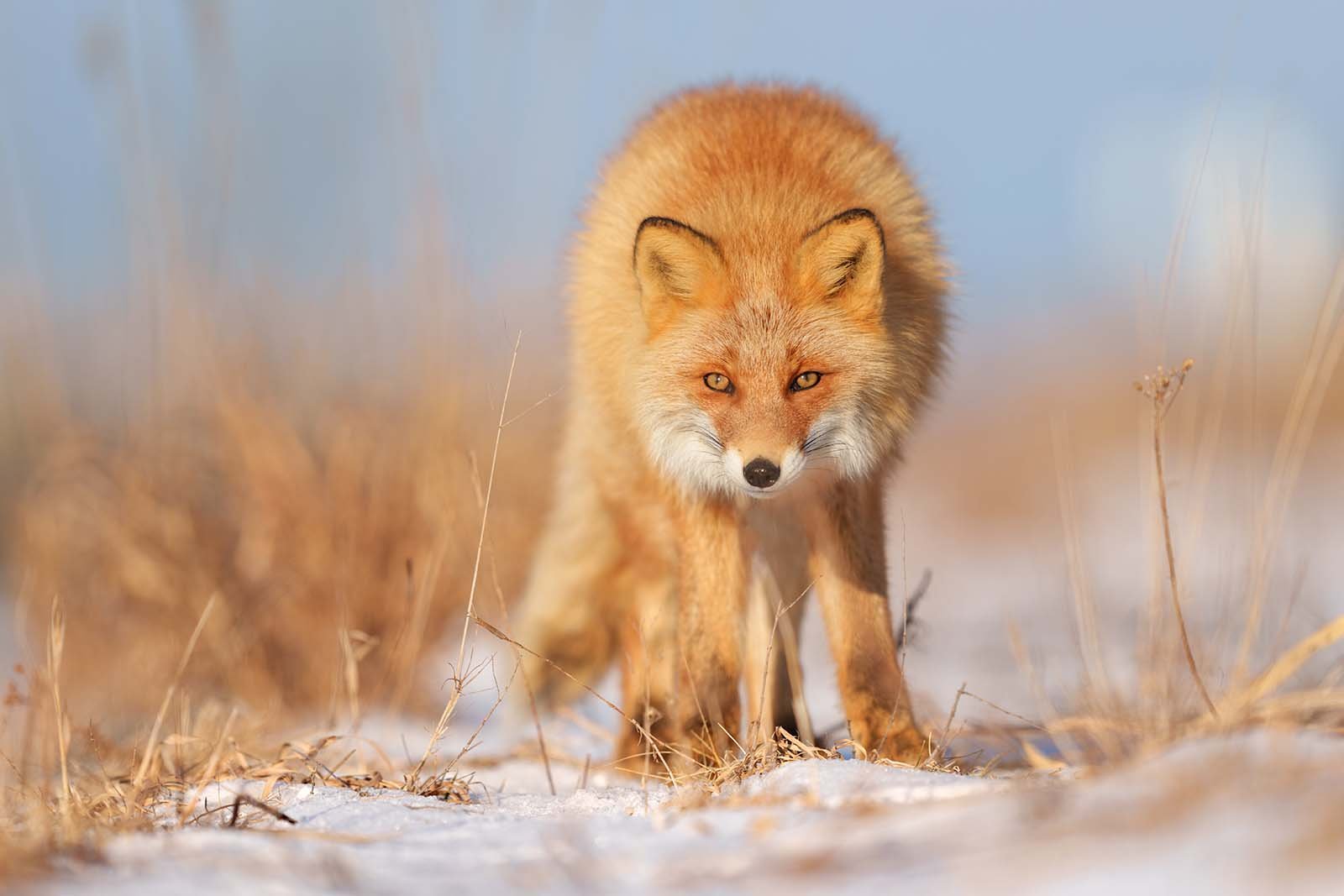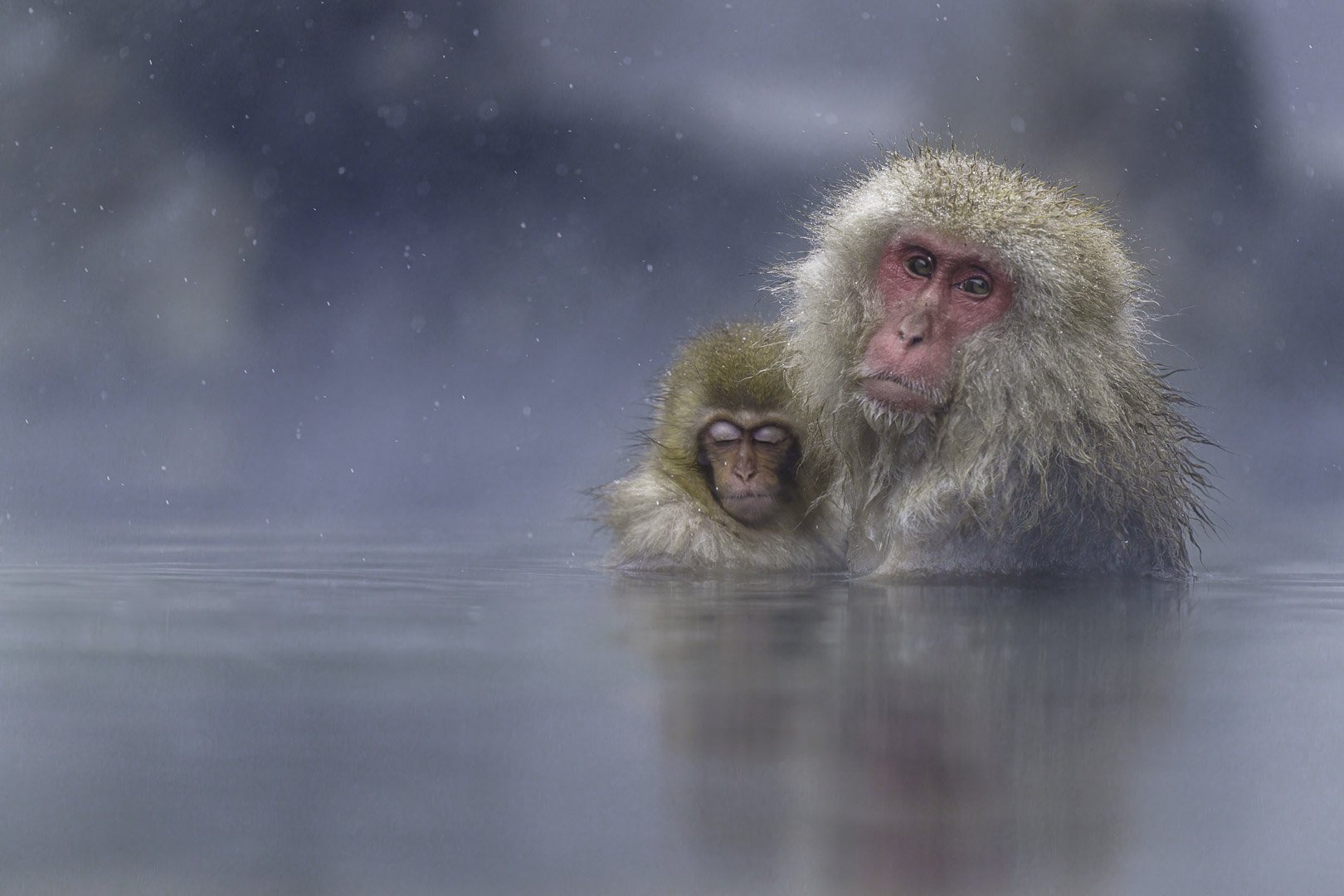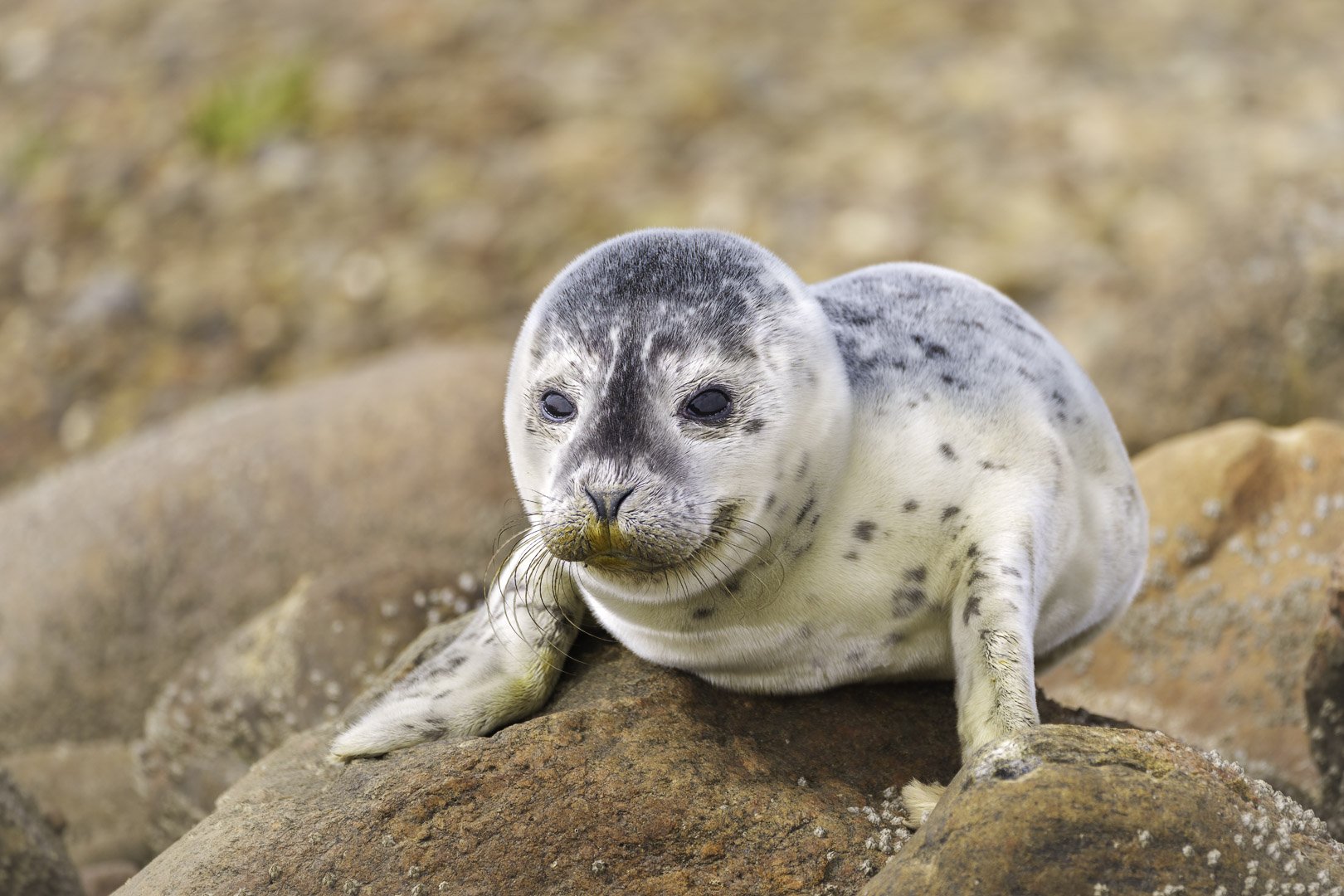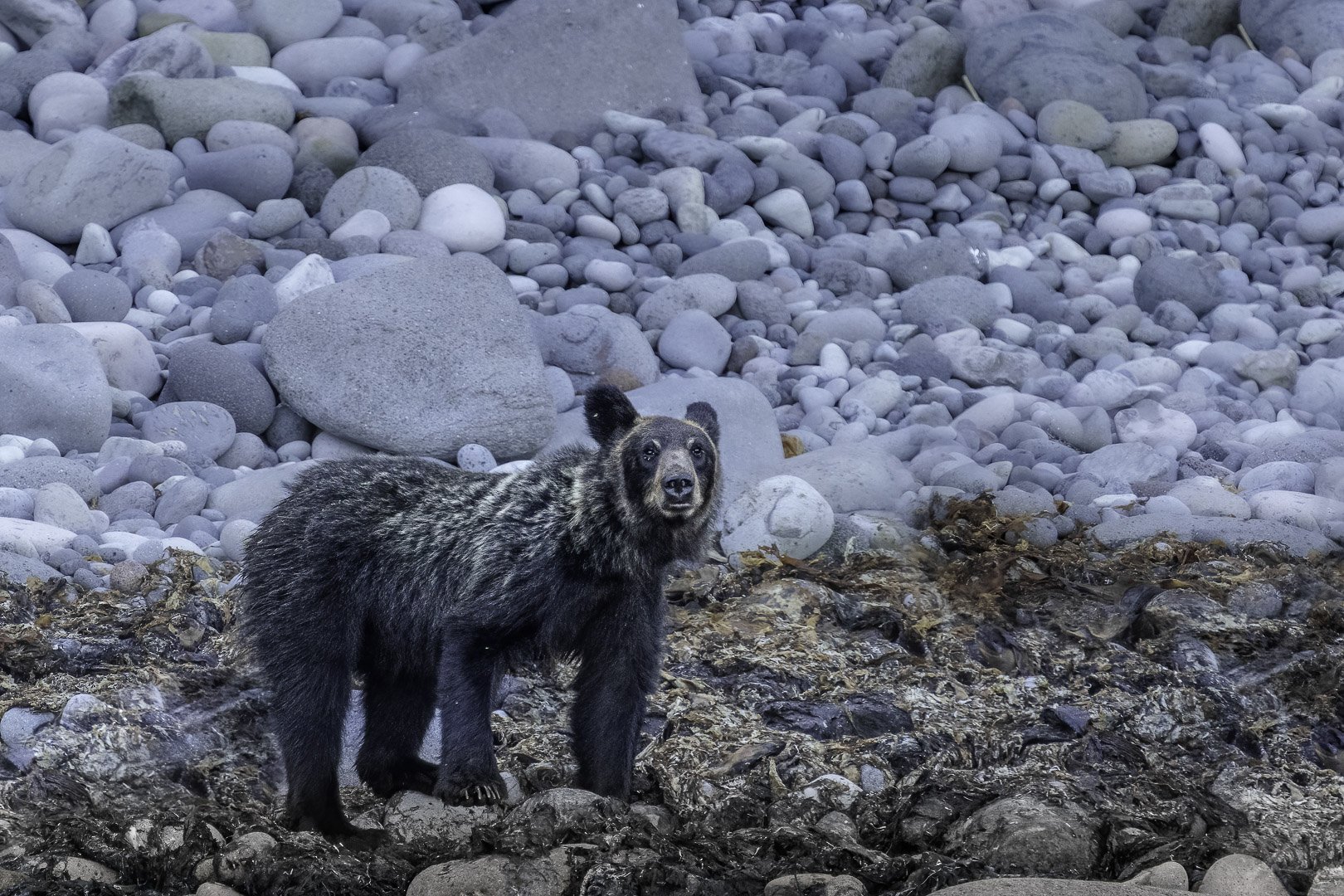Japanese macaque (Macaca fuscata)
Japanese macaque (Macaca fuscata) - Picture taken in Nagano, Japan.
Key Facts:
Size: 52 - 57 cm
Weight: 8.4 - 11.3 kg
Diet: Fruits, leaves, tubers, seeds, bark, insects, and small vertebrates
Observation Tip: Nagano & Kyoto, Japan
Photography Tips:
Lens: Starting from 200 mm
Difficulty Level: Easy
The Japanese macaque (Macaca fuscata), also known as the snow monkey, is an omnivorous species of monkey native to Japan. They feed on a variety of foods, including fruits, leaves, tubers, seeds, bark, insects, and small vertebrates. However, the exact composition of their diet depends heavily on the season and the available food supply. In some regions, Japanese macaques have also learned to visit human settlements to feed on food scraps.
Japanese macaques live in Japan and can be found on the main island of Honshu as well as on some smaller islands. They are widespread in Japan due to their broad range and adaptability to various habitats.
The habitat of Japanese macaques is highly diverse, including forests, mountains, mountain ranges, rocks, rivers, and coastal regions. They can live at elevations of up to 3150 meters and have adapted to life in cold and snowy regions.
Japanese macaques are medium-sized monkeys with brown-gray fur and a pink face. They have short tails and typically weigh between 8.4 and 11.3 kilograms, with males being slightly larger than females. Japanese macaques live in groups with variable composition and size, averaging 41 individuals. The groups are matrilineally organized, as female individuals remain in their birth group for life, while males must leave their birth group upon reaching sexual maturity. The group's hierarchy is supported by dominant females, and there is an alpha male. Females also have a hierarchy, which often remains stable, and mutual grooming reinforces group cohesion. The home ranges of individual groups mostly overlap, but groups typically avoid each other. Aggressive behavior can occur, especially during the mating period or in times of food scarcity.














